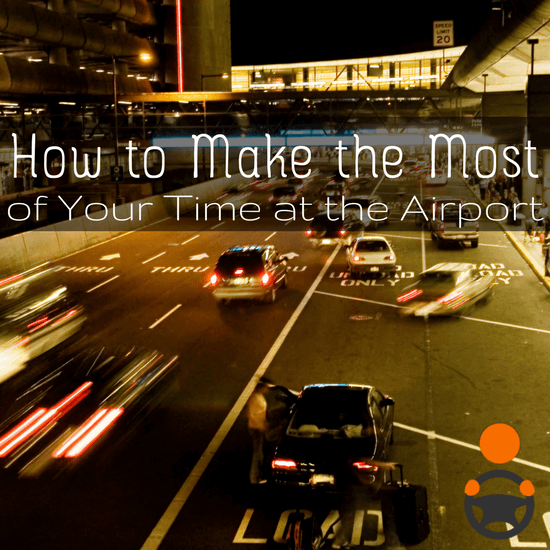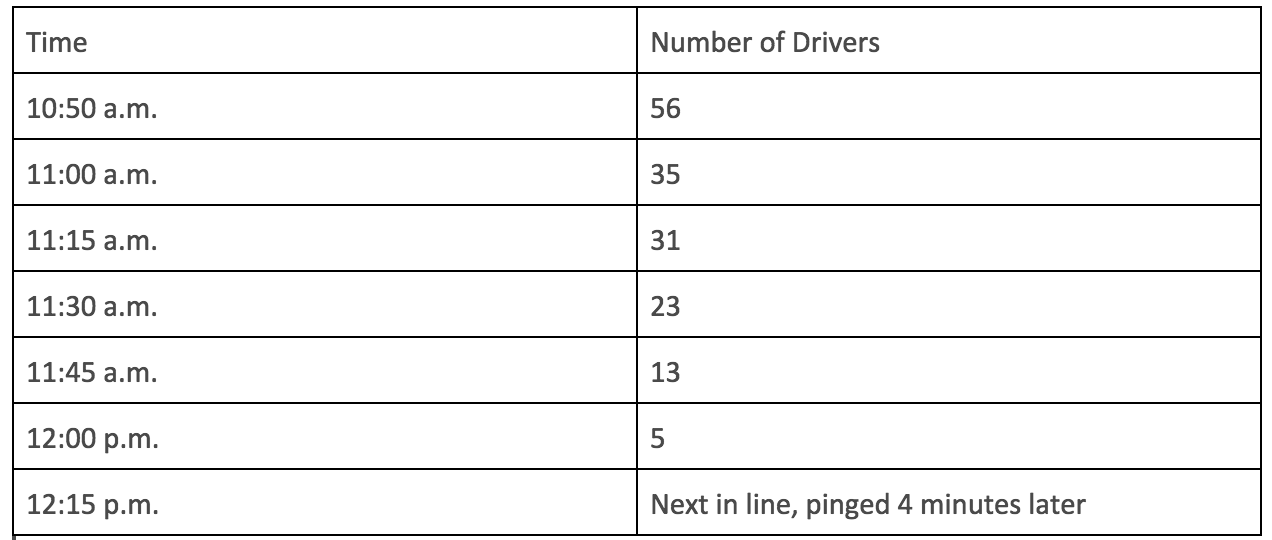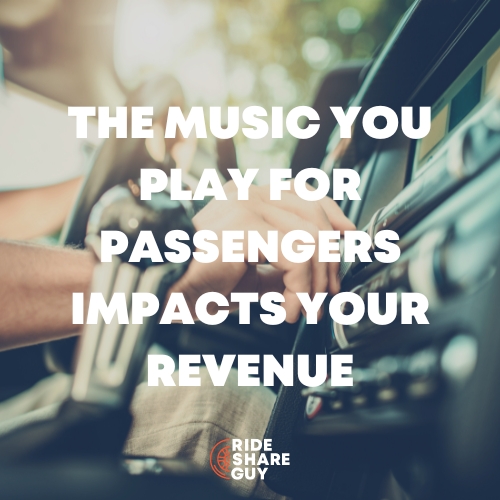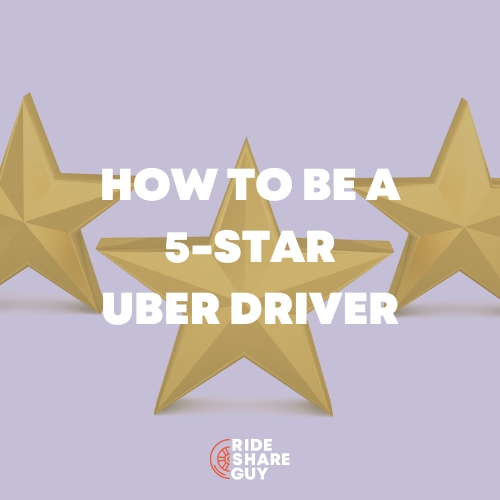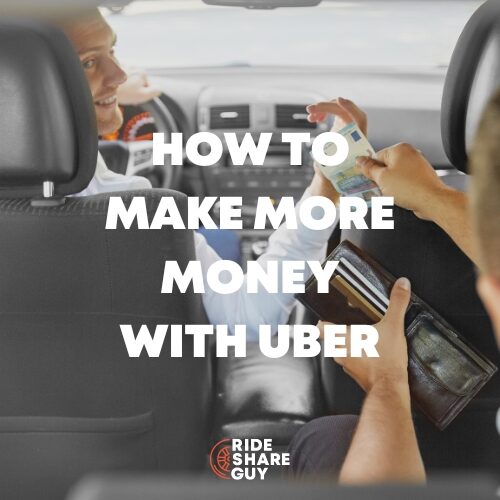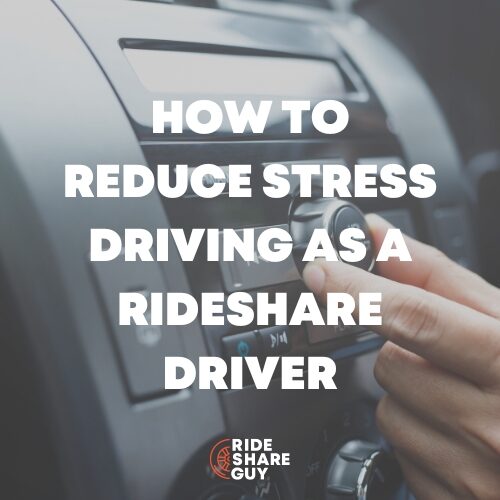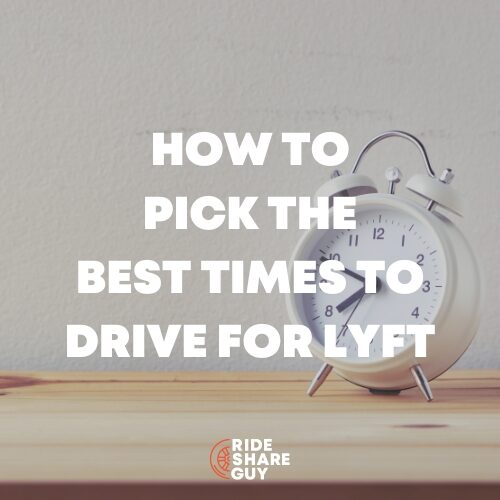In addition to being long drives that usually take you out of the city, airport rides can be plain boring. All that waiting in line, waiting for your passenger to find you – it’s enough to make some drivers swear off airport rides. Not so with Dean! Today, guest post contributor Dean Lee shares his strategies on making the most out of airport rides. Got a great guest post idea? Click here to contact me.
You know the experience. Pick up a ride request early in the morning or early evening and head to the airport. After you drop off your ride, you decide to jump in line at the designated holding area to wait for arrivals.
Or perhaps you just start your day or evening at the airport waiting for a request. Yep, it’s great. Simple, right? Get in line and wait for that ping. And wait… and wait… and wait.
Airports can be a great source of rides that generally pay out better than other rides. That said, does it make sense to wait one, two or three hours for the next ride request? What are you missing out on driving elsewhere during this time? Is this the most effective use of your time? In some cities, Uber is bypassing the line in favor of pre-match and re-match.
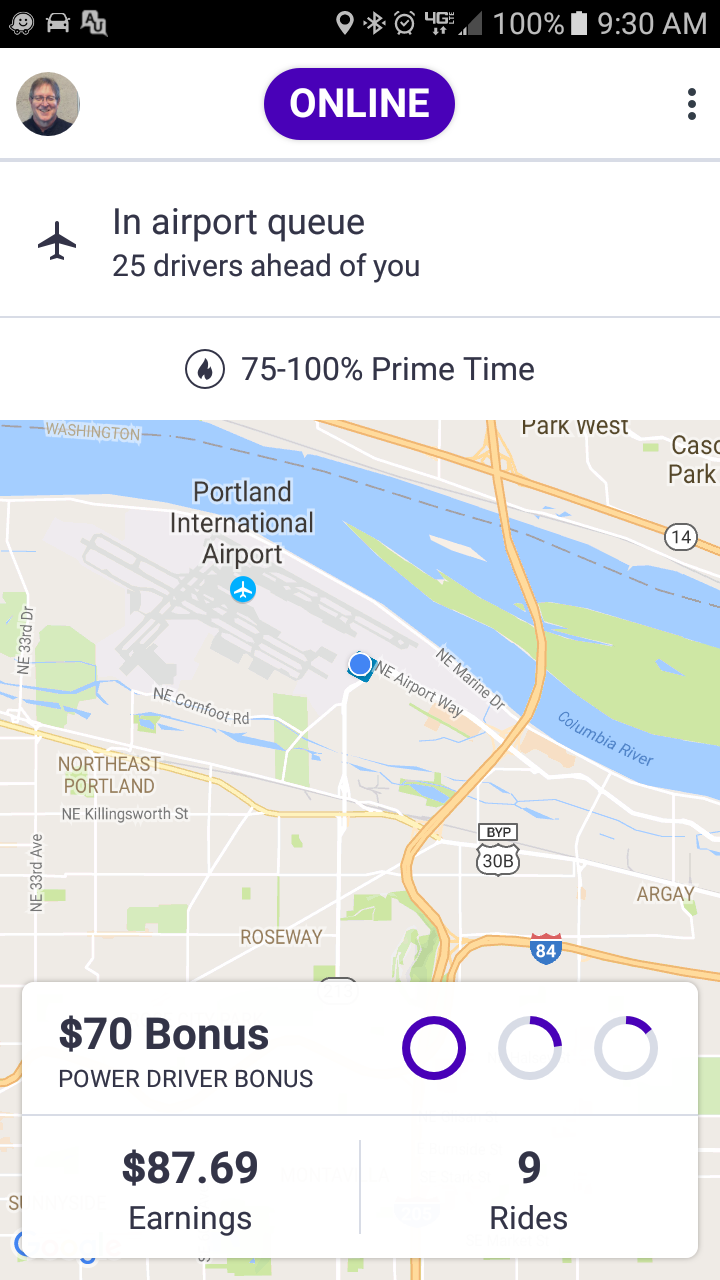
However, when you are riding the airport wave, it pays to be smart about using airports by doing some simple homework. Know your market, understand traveler habits, and ride the waves of opportunity.
Before we get to the how, let’s look at the basics.
Your Market
First, ask some basic questions about your city and its market. What months do you have the most travelers passing through your port? Are there seasonal peaks and valleys? What airlines dominate your market? Is it Alaska, United, Delta or others? Does your city have a port that services international flights? Is your city a major international hub like San Francisco or Seattle or simply a starting point for points beyond?
Sound like a lot of questions? Well, guess what? You don’t have to be a travel expert to find this information. It’s readily available. Every major port provides stats on flights. It’s a search on Google to find your market’s data. For example, the Port of Portland here in the Pacific NW.
Look for trends and take a high level view. You don’t have to be a data analyst to see volume trends for domestic and international flights. You may discover that June through August, for example, you need to make sure you are available to work in airport runs as part of your airport strategy.
Travelers’ Habits
Begin asking questions. Are you familiar with your state or cities travel guides? Do you have one or two guides in your car? If not, why not? Is your destination the door to a vacation wonderland? Do folks fly into your city for the weekend just to hang out? Knowing the fun, popular spots in your city will not only make you well-informed for navigation purposes, but may also net you some tips.
From a business perspective, do you have several major corporations in your city such as Intel, Nike or others? If so, what does that mean for business travel? What months are you more likely to see business travel? How do holidays impact business travel?
Another question to reflect is, what have you learned from travelers in the past? What questions have they asked? You would be surprised what you can glean in simple conversations such as ‘tell me what is your profession, what do you do?’ or ‘Are you visiting for business or pleasure?’
Time to Get Granular
While knowing your airport’s monthly – yearly stats is helpful to get a view of the flow of travelers, you really need daily flight schedule to begin to understand what I call waves of opportunity. I use this site from Port of Portland (PDX) to know the flight schedule for the day.
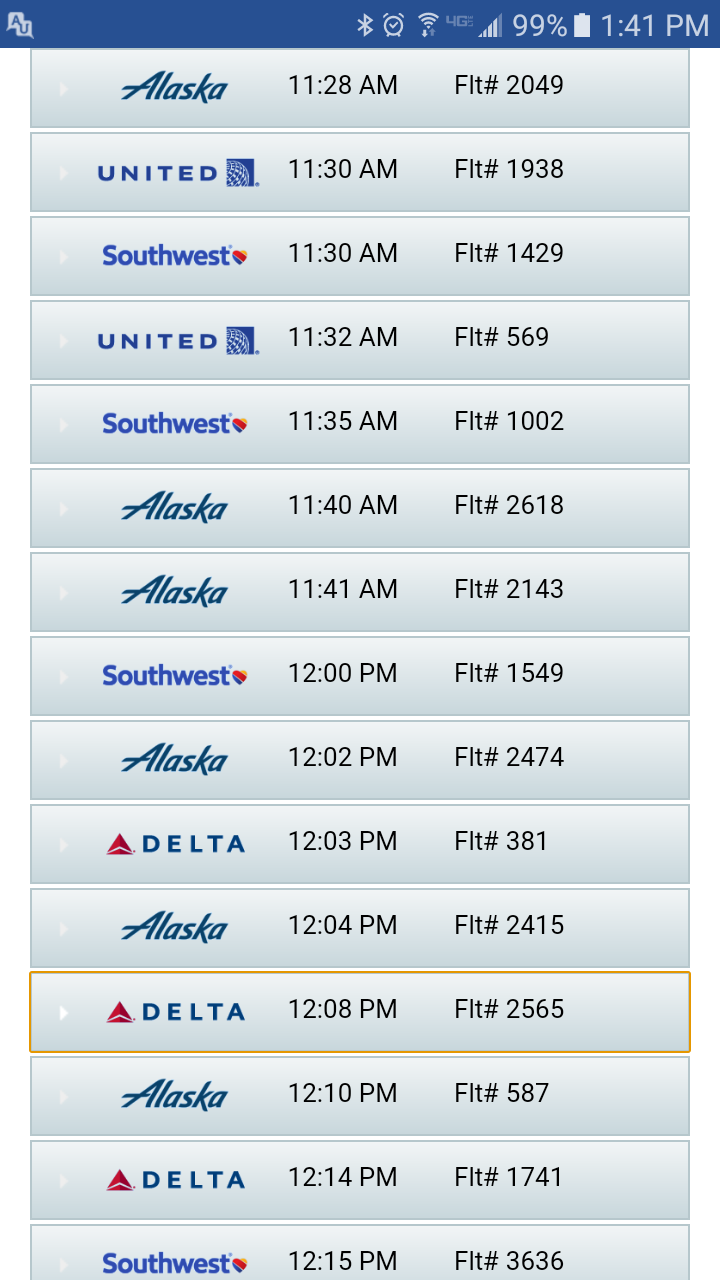
I keep my search specific to arrivals, and then determine when I will visit the airport. You can also drill down on the where the flight originated from. Before we get into this detail, let’s take a quick look at the driver hold queue experience.
Have you noticed how the TNC wait queue works? You arrive and you are assigned a place in line. Let’s say you come into the queue and your Lyft app greets you with “There are 54 drivers in front of you”. Okay, you sit back, time to wait.
[Editor’s note: This may be different with recent airport changes. Click here to read if your airport is testing pre-match and re-match]
You notice in the span of 15 minutes, the queue went from 54 to 37. Wow, this is great! The next 15 minutes you see 7 more drivers have left. Awesome, should be no time before I get a request, right? Now over the next 45 minutes, requests trickle to a crawl. Three, two… one. Another 30 minutes or more go by and finally, you are next in line.
What just happened? The ride requests seem totally random! It’s not random. You just experienced a wave – a crest to trough in demand. From the data points I’ve taken over several months, there is a direct correlation between flight schedules versus number of ride requests. This is where knowing your market comes in.
If there is anything I’ve learned serving PDX, certain flights generate the most requests. I’ve used my previous business travel experience to know what flights are most likely to have a number of business travelers. Now, string several flights together in a 15 minute span and you have a wave.
Wave Example
I’m an early morning driver. I typically consider waiting at the airport after I’ve dropped off a departure depending on time of day, opportunity or if I need a break.
I wanted to check on a batch of late morning/early afternoon flights this particular day. I knew if I could get to the airport before 11 a.m., I had a chance to pick up a ride within 1 hour. I entered into the queue at 10:50AM. I was the 57th driver in the queue.
I got a ride request at 12:19 p.m. This is how the wait time tallied:
I came into the queue when a series of flights from LA, San Jose and Oakland were arriving or on the ground. I was aware, based on the schedule, that there were other flights arriving that presented another good opportunity to connect with a ride. There were also flights from smaller cities/markets but my consistent observation is certain flights generate more ride potential than others. If you miss a window, your wait time can easily extend to 2 or more hours.
Takeaway
If you are trying to make the most of your drive time, be aware of the waves based on the flight schedule for the day. Make your decision to stick around on current hold time and the opportunity presented by flight schedule. Also note to drill down on the schedule detail day of the flight, to see if the flight is on time or changed. Flights get canceled or delayed, which can change your decision.
Also consider your experience. If you know you can pick up 2-3 rides in the morning driving versus waiting for 2-3 hours at the airport, it’s an easy decision to walk away. Know when to hold and when to fold and walk away.
Finally, life happens. You miss a wave, you are low in the queue. You’ve invested 2 hours waiting for a ride. Now you have to decide if you are going to stick it out or if you can walk away. I’m human, I’ve experienced this both ways. I know what it means to wait for 3 hours to get a ride that paid out less than $15.
In that case, my ride was less than 3 miles away! I chose my attitude to serve the customer by allowing them to run into Staples before they made their meeting with a client at Starbucks around the corner. (I was rewarded with a $6 tip on my fare). Not great but felt good.
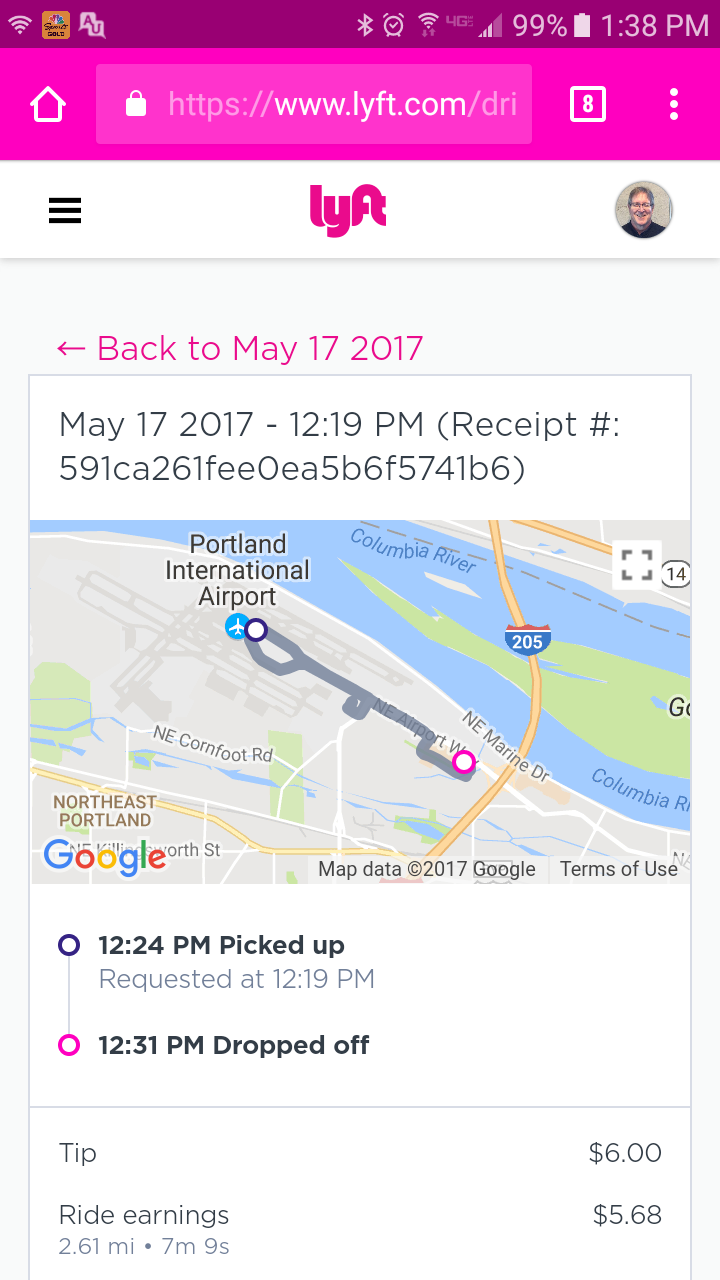
Dean Lee lives and plays in the Pacific NW, serving Portland and surrounding area as a Lyft driver. Dean works part-time the technical manager for a non-profit serving the domestic violence community (www.armsonline.org). He enjoys driving in the mornings serving customers who need a ride to their office or the airport. Dean loves the conversations and connections he has made as a rideshare driver.
Drivers, what do you think of these driving strategies for the airport, and do you have any airport strategies to share?
Read next: How to increase your Uber and Lyft income
